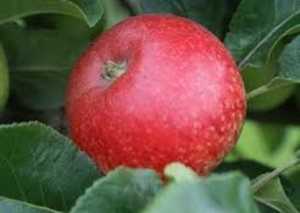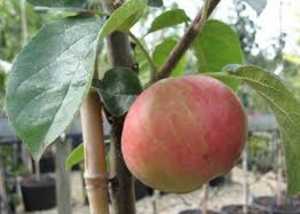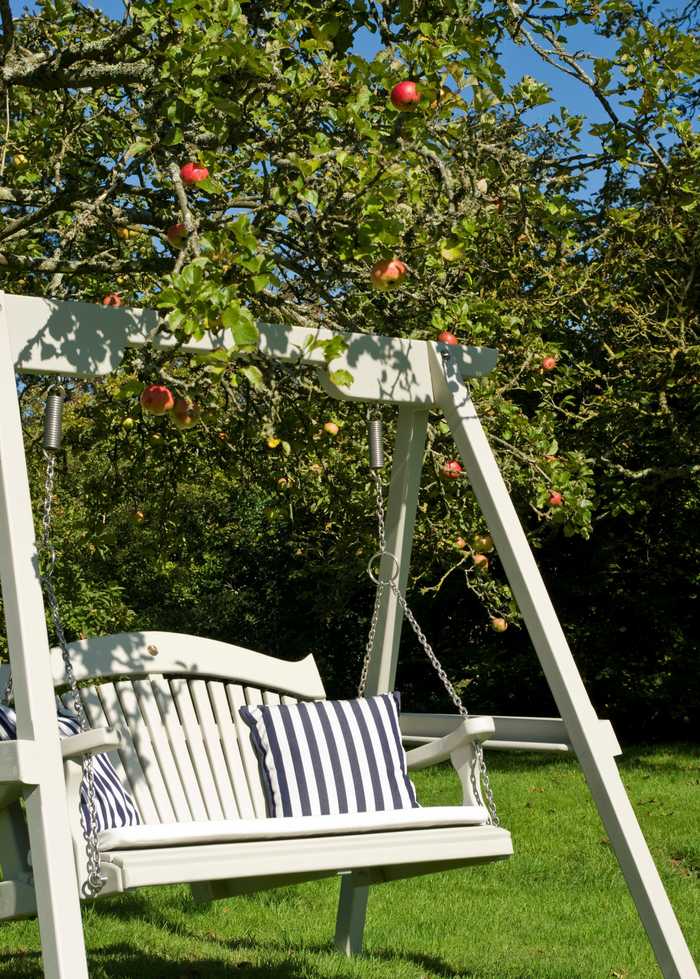An Apple a Day by Katherine Crouch
It has always been a dream of mine to plant an orchard of apples. I fantasize about planting and eating unusual and delicious apples on semi-dwarfing rootstocks, so I may be able to prune and pick without resorting to long ladders in my old age.
I chance to find a copy of the late lamented Scotts Nursery catalogue from 1962-3 season, when you could buy one-year old apple maidens for 14 shillings each. You can still buy maidens for under £20 each, and they are quickly planted and soon established, and on dwarfing rootstocks they will start cropping lightly in only 2 years. I shall quote Scott’s description as they have not been better in nearly 60 years and stick mostly to their highly recommended varieties in bold type in the catalogue.
Leaving discussions about rootstocks, pollination groups, planting, training and pruning for another time, I will concentrate on varieties for my fantasy orchard. First – what not to grow. Bramley’s Seedling, so widely grown and prolific they are to be found in boxes by garden gates with signs inviting you to help yourself. It is not often I want to make a traditional pie, and they make a rather thinly flavoured and sour juice, although they keep well through winter.
No Cox’s Orange Pippin for me; to crop well they need a lot of feeding and spraying to produce a decent crop. Wanting nothing tasteless or readily available in the supermarket, it will be nice to have a few Somerset varieties. From early ripening to late, I would like…
Beauty of Bath “deliciously sweet with an acid tang, like most earlies inclined to be soft, prettily striped and spotted scarlet on yellow. A fine healthy tree, usually resistant to scab”. August ripening
Ellison’s Orange “quite the easiest apple to manage in a small garden, growing quickly and soon bearing generous crops of handsome fruit like a large Cox in appearance, but earlier, crisp and juicy if eaten off the tree in September, soft when fully ripe. Scab and cancer resistant”.
Laxton’s Fortune “the best in its season (early October). A finely flavoured aromatic juicy fruit, beautifully brightly coloured, red striped on yellow, a prolific cropper from an early age, making a compact tree, notably resistant to scab”
Egremont Russet “a delicious dull russet fruit, of ideal compact habit, cropping well and not susceptible to scab. Will keep till Christmas. Perhaps the best flavoured of all English apples”.
Tom Putt “a Rector of Trent, (near Yeovil) Tom Putt was a great fruit lover and his namesake is still appreciated in local orchards. A hard red-striped fruit, really a cider fruit, also suitable for cooking, but a refreshing dessert when ripe” – in late October.
Orleans Reinette “remarkably hardy and prolific and so richly flavoured that it must be recorded as the best all-round late dessert fruit”
Tydeman’s Late Orange “one of the new East Malling varieties which holds promise as a very late fruit of the highest quality, possibly keeping till April and May”
Brownlees’ Russet “one of the best late varieties, a fairly large fruit, cropping well and making a fine compact upright tree. Pick late. One of the most beautiful in flower, being crimson in bud, pink when open”.
Warner’s King “a very large kind, recorded specimens have weighed 2lb., long well known, of vigorous growth”
I shall look beyond Scotts catalogue and seek out Sops in Wine, a sweet cider variety which also make a tasty eater. Every part of the plant including the wood is flushed with pink, and it makes a lovely pink juice. Sadly, it is out of stock this year from Adam’s Apples near Honiton, but they list some very tempting varieties. In my Somerset section I must have Cheddar Cross, Allington Pippin x Star of Devon, bred over a century ago at Long Ashton Research station near Bristol, a crisp juicy early eater and Court of Wick, known in 1790 and still worthy of a space in the garden today.
While my dream orchard of a dozen apples remains in my imagination, I shall go again to The Newt near Bruton. Now a sumptuous hotel formerly known as the Hadspen House, the walled garden is now home to 267 varieties of apples, each labelled and grouped according to their place of origin. I recommend it as the perfect destination for the frustrated malophile. The entrance is £15, but you can visit as many times as you wish during the year.
With many thanks to Katherine Crouch
Katherine Crouch Garden Design
Telephone
Mobile
If you would like to contribute a blog, please contact Sitting Spiritually at info@sittingspiritually.co.uk
Posted on November 18th 2019





